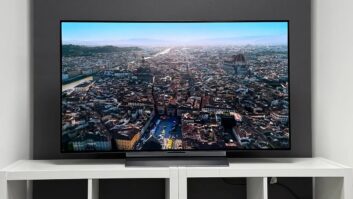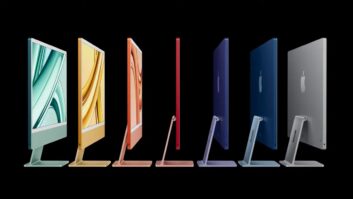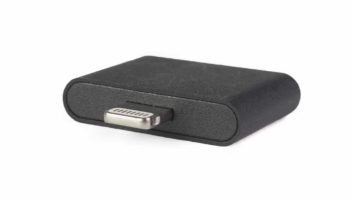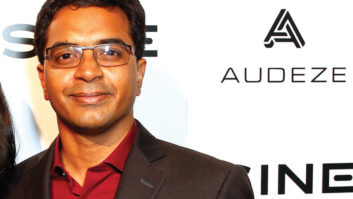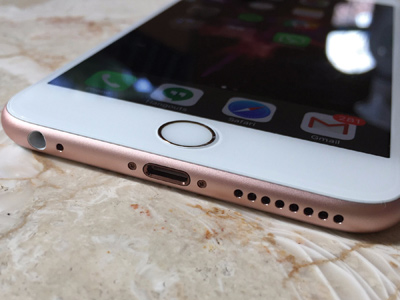
If you think Apple dropping the headphone jack for the Lightning port is the biggest change since the switch from 30-pin to Lightning, well, you’d be wrong.
Plainly put, this will be big — huge. That first switch, despite all the howls it generated, still left flexibility for both accessory makers and consumers — that $149 iPod alarm clock didn’t become completely obsolete thanks to the 3.5mm port.
The rumor that Apple intended to drop the 3.5mm port first surfaced in the TWICE offices in late 2014, shortly after Apple completed its $3 billion acquisition of Beats Electronics. A headphones manufacturer, in town to show off his company’s latest model, swore it was just a matter of time. Despite being mildly skeptical — anything is possible, after all — the drumbeat of its likelihood has only grown steadier since then, and it seems all but inevitable to many at this point.
The benefits of such a switch are generally thought to be three-fold. One, the Lightning connector permits the passthrough of digital audio, so there is the potential for better sound quality. Two, the connector also enables the transmission of other digital data, including biometric. Three, dropping the 3.5mm port permits the iPhone to slim down a bit (although this last point is thought to be the least crucial justification).
Make no mistake: This is still just a rumor at this point. Multiple tech sites, including the very reliable Apple Insider and Fast Company, have said their sources support the news, and most of the people we spoke with took the view that it’s just a matter of time. Apple, though, is predictably mum — it didn’t respond to our request for comment — and it’s unlikely the public will know the truth until the iPhone 7 is actually unveiled.
Ben Arnold, executive director and industry analyst at The NPD Group, said he expects high-res audio to be the significant contributing factor if such a switch is made. “They own a big audio company now, and they have this big library of music … and I’ve heard they have the capability to start selling high-res iTunes music.”
Andreas Sennheiser, co-CEO of his namesake company, echoed this sentiment, saying, “Sennheiser has seen many different connection standards come and go in the audio world over the years. Audio connections have always been continuously evolving. … Digital outputs, such as Apple’s Lightning connector, will offer new opportunities to take a step forward and to further enhance the sound experience for the customer. For example, 3D audio technology using digital signals is just one possibility.”
But, Arnold laughed, “who knows what they’re thinking about? We could see Beats take on a higher profile at Apple. I don’t think I’m going out on a limb. We’ve seen them start Apple Music, and that wasn’t Beats branded, which a lot of people thought would be central. … If there’s this impetus to replace with Lightning connector, then Beats could play a larger role in this.”
Third-party manufacturers are already accustomed to living in the dark when it comes to designing accessories for Apple products, and the ones we spoke with are currently at the ready for such a switch.
Phaz Music’s P2 headphones, unveiled at CES 2015 over a year ago, come with both a traditional 3.5mm audio cable and a Lightning cable. The latter can be used to charge the iPhone from the headphones’ internal battery.
Audeze, meanwhile, took it one step further at this year’s CES with its Sine headphones. These $499 headphones come with a separate Lightning cable that transmits 24-bit digital audio through a digital signal processor and DAC. Sankar Thiagasamudram, Audeze CEO, told us that although the company had no special knowledge about a switch from 3.5mm to Lightning, “going by the changes that Apple has pushed the industry through — dropping DVD, Firewire, Ethernet connectors, etc. — it seems likely.”
“In the high-end audiophile market, most users use a digital audio player that provides high-resolution playback,” said Thiagasamudram. “Others use an external DAC and an external amp; however, more people use [Apple devices] to play music than any other player. Our goal was to see if we could bring the same high-quality playback to i-devices using an external DAC and an amp. The Lightning connector provides an amazing way to get 24-bit digital playback and APIs to control the device.”
Torque Audio founder Yasu Yamamoto told TWICE his company “has been developing wireless and Lightning audio module (LAM) concepts for some time now in preparation for this rumor.” JLab president Win Cramer also said his company is “exploring several new products in our assortment to feature Lightning cables.”
Brock Guclu, Satechi president, said his company currently has plans for compatible options. “We are looking at ways in which we can incorporate the Lightning port, but still offer Bluetooth options for those who prefer wireless connectivity.”
To this point, while companies play catch-up, it’s likely many will indeed emphasize Bluetooth in the interim. Fortunately, wireless headphones are a category consumer are already intimately familiar with, with sales of Bluetooth headphones more than doubling from August 2014 through July 2015 vs. the prior-year period.
Said Andy Fathollahi, CEO of Incipio, “Given the growth and success of wireless technologies such as Bluetooth, it’s a logical move for [Apple]. We already manufacture a wide assortment of Bluetooth products under the Incipio umbrella, so if this change occurs, we will be ready to support Apple products with compatible mobile solutions.”
Adapters are also anticipated to have a prominent role in the bridge period, and Yamamoto said Torque is developing adapters that will make its current products wireless.




